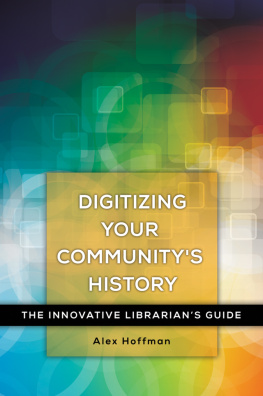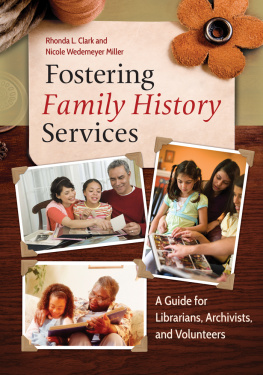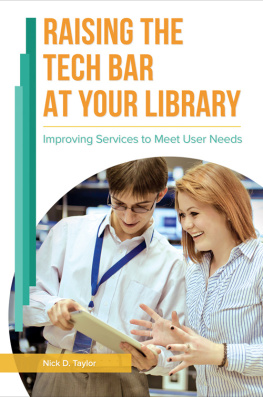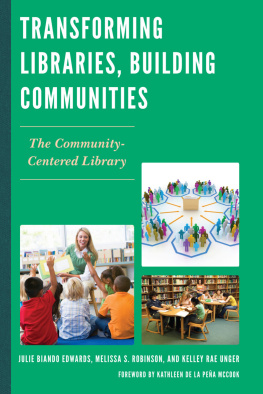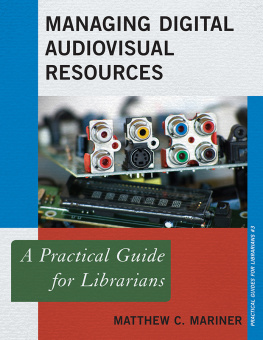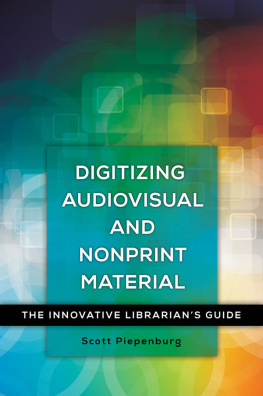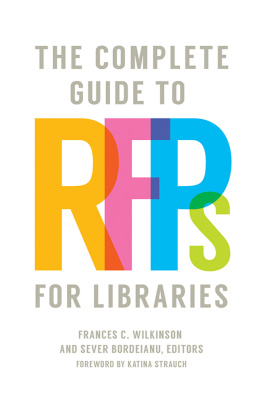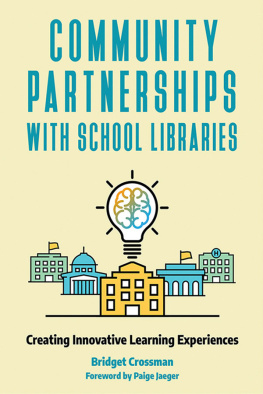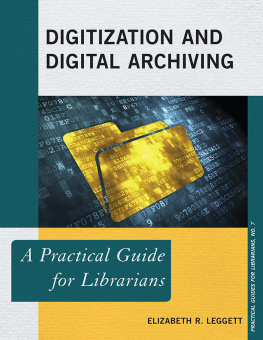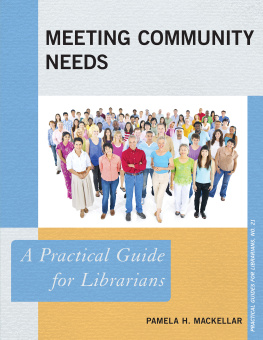DIGITIZING YOUR COMMUNITYS HISTORY
Recent Titles in Libraries Unlimiteds
Innovative Librarians Guide Series
Digitizing Audiovisual and Nonprint Materials:
The Innovative Librarians Guide
Scott Piepenburg
Making the Most of Digital Collections through Training and Outreach:
The Innovative Librarians Guide
Nicholas Tanzi
DIGITIZING YOUR COMMUNITY'S HISTORY
The Innovative Librarian's Guide
Alex Hoffman
INNOVATIVE LIBRARIANS GUIDE
Copyright 2016 by Alex Hoffman
All rights reserved. No part of this publication may be reproduced, stored in a retrieval system, or transmitted, in any form or by any means, electronic, mechanical, photocopying, recording, or otherwise, except for the inclusion of brief quotations in a review, without prior permission in writing from the publisher.
Library of Congress Cataloging-in-Publication Data
Names: Hoffman, Alex, 1986 author.
Title: Digitizing your communitys history: the innovative librarians guide / Alex Hoffman.
Description: Santa Barbara, CA: Libraries Unlimited, 2016. | Series: Innovative librarians guide | Includes bibliographical references and index.
Identifiers: LCCN 2015050728 (print) | LCCN 2016017068 (ebook) | ISBN 9781440842405 (paperback) | ISBN 9781440842412 (ebook)
Subjects: LCSH: Libraries and community. | Local history materials Digitization. | Public services (Libraries) | BISAC: LANGUAGE ARTS & DISCIPLINES / Library & Information Science / Collection Development.
Classification: LCC Z716.4 .H64 2016 (print) | LCC Z716.4 (ebook) | DDC 025.2dc23
LC record available at https://lccn.loc.gov/2015050728
ISBN: 978-1-4408-4240-5
EISBN: 978-1-4408-4241-2
20 19 18 17 16 1 2 3 4 5
This book is also available as an eBook.
Visit www.abc-clio.com for details.
Libraries Unlimited
An Imprint of ABC-CLIO, LLC
ABC-CLIO, LLC
130 Cremona Drive, P.O. Box 1911
Santa Barbara, California 93116-1911
www.abc-clio.com
This book is printed on acid-free paper 
Manufactured in the United States of America
Contents
We all have stories. These are the stories we live, the stories we tell ourselves, and the stories we are a part of with those around us. Aside from the narratives in our head, we have physical artifacts that represent the stories we have lived. Photographs, letters, video, and sound are all remnants of the journeys we have made, or made by those before us.
Without the objects and documents that help pass on the stories, we lose something central to humanity. This is one of the great things about the digital era we live in. Being so connected allows us to bond over shared experiences, histories, and events.
We all know that libraries have been shifting and changing over the past decade. Once thought of as repositories for books and other information, libraries are now thriving community centers, still full of books, stories, and wisdom, but also cultural programs, access to new tools, and opportunities for education. Particularly, many libraries now offer the ability for patrons to learn new technologies like digitization.
Digitization offers patrons the opportunity to get in touch with their own personal and historical materials, their memories, and their own life narratives. What previously required extremely cost-prohibitive equipment and knowledge only a small group possessed is now very accessible, with high-quality results and a shallow enough learning curve that even those who have never touched a computer can learn.
What this book offers is a high-level view of what it takes to start a DIY digitization program at your library From garnering the support of your institution to learning the equipment and engaging the community in these historical materials.
Specifically, this book will cover what digitization is and why it is important, how to begin planning out your services, what equipment and software to consider, storage and archiving options, developing ways to engage the community, and training staff and the public on the process.
Since this book focuses on getting the general public to digitize their materials, we are going to take an approach that should fit the average person. This takes into consideration time constraints, beginner levels of knowledge, and sustainable and practical expectations and practices. We want to help people preserve their materials, but in a way that suits their lifestyle and their comfort level. We will not be digitizing things for the Library of Congress here, but family materials that we want to preserve for our children and grandchildren.
This book is about digitization, and using this process to share the stories we have, to connect with one another, with the library as the common thread in our communities.
From small rooms with a single scanner to larger labs supported by classes and programs, there is a digitization program that can fit within any librarys means. Let us dive in.
Chapter
The Basics
What is Digitization?
Simply put, digitization is the process of converting information into a digital format. You can think of it as taking physical, real-world objects, or analog media (photos, vinyl records, video tapes) and transporting them to the modern, technological realm of computers, the web, and mobile devices.
With so much of our work centered within the digital world, it is not only convenient to have digitized versions of our materials, but it is also important for storing and preserving, creating redundant copies of our materials, and of course, sharing with others.
Digitization provides us with ways to connect with our history on new and varied levels. We can conveniently and quickly access digital versions, work to correct any flaws, such as tears, discoloration and missing pieces, as well as work with the materials in various forms of new media with minimal risk of damaging the original.
History
The first real digitization project began in 1971 with Project Gutenberg. The first document to be digitized was the U.S. Declaration of Independence, at the University of Illinois. The project's aim was to create electronic texts of influential and classical literature and documents.
Throughout the 1970s and 1980s, there were a number of other projects, including Thesaurus Linguae Graecae, the Oxford Text Archive, and the ARTFL Project, that were all early efforts to digitize important texts (Johnston, 2012).
Many other universities and organizations started projects to preserve literature and the humanities well into the 1990s. These were all efforts by large institutions to preserve important historical and humanitarian documents.
What came next is what I refer to as mass digitization, which is what this book aims to be a part of. As technology became smaller and more affordable, institutions took on larger and larger digitization projects, and amateurs and hobbyists were able to begin their own digitization projects at home.
For the past 20 years, many people have had the chance to begin digitizing their materials with greater ease, security, and convenience. Many of us have had scanners and other tools for digitization in our homes for nearly two decades, possibly without realizing it. It is this accessibility that has made DIY digitization such a viable method of preserving our past.

